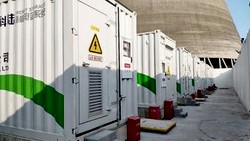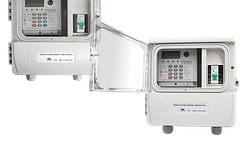Distribution transformers play a vital role in electrical power distribution, converting high-voltage electricity from transmission lines to lower voltages suitable for consumer use. These transformers are classified based on various parameters, and one important classification is the vector group code. Vector group codes provide information about the winding connections and phase relationships of a distribution transformer. In this article, we will explore vector group codes, their significance, and their features in distribution transformers.
What is a Vector Group Code?
A vector group code is a standardized designation assigned to distribution transformers to describe the configuration of their windings. It indicates the relative placement of the high-voltage (HV) and low-voltage (LV) windings, as well as the phase shift between them. The vector group code consists of alphanumeric characters that represent the winding connections and their polarity.

Significance of Vector Group Codes
Vector group codes serve several important purposes in distribution transformers:
- Phasing and Parallel Operation
Vector group codes ensure proper phasing between transformers when they are connected in parallel. Transformers with compatible vector group codes can be interconnected without causing phase imbalances or circulating currents. - Fault Detection and Protection
The vector group code helps identify internal faults within a transformer. By analysing the phase relationships and voltages, engineers can quickly identify the specific winding or connection affected by a fault and take appropriate measures for protection and maintenance. - Transformer Interchangeability
Vector group codes enable interchangeability of transformers with the same code. If a transformer needs to be replaced or added to an existing system, selecting a transformer with the same vector group code ensures compatibility and proper functioning.
Common Vector Group Codes
Several vector group codes are commonly used in distribution transformers. Let's explore a few of them. You can find the full information in the IEC 60076-1.
- YNyn0
This code represents a transformer with a star-connected HV winding and a star-connected LV winding. The LV neutral is directly grounded, while the HV winding may have an impedance grounded neutral. This vector group code is widely used in low-voltage distribution systems. - Dyn11
Dyn11 represents a transformer with a delta-connected HV winding and a star-connected LV winding. It offers flexibility in terms of voltage transformation and is suitable for applications requiring higher voltage step-up or step-down. - Yzn11
Yzn11 represents a transformer with a star-connected HV winding and a zigzag-connected LV winding. The zigzag winding provides excellent grounding and neutral displacement characteristics, making it suitable for applications with harmonics or unbalanced loads. - Dd0
Dd0 denotes a transformer with a delta-connected HV winding and a delta-connected LV winding. This vector group is commonly used in industrial applications where the load requires a close voltage match to the supply voltage.
Phase shift
The number at the end of the vector group code indicates the phase shift between primary- and secondary side by using a clock face. The vector for the primary side is set at 12 o'clock and the rotation is anti-clockwise.
So, 11 indicates that the phase shift between the primary and secondary side of the transformer is 30 degrees leading (look at your analogue watch).
0 means, there is no phase shift between primary- and secondary side.
Takeaway
Vector group codes play a crucial role in distribution transformers, providing essential information about winding connections, phase relationships, and other features. By understanding and selecting the appropriate vector group code, engineers and operators can ensure proper phasing, fault detection, protection, and interchangeability of transformers in distribution systems.
The wide range of vector group codes available allows for flexibility in meeting various voltage transformation requirements, phase shifts, grounding methods, and harmonic mitigation. Each vector group code has its unique advantages and suitability for specific applications.
As technology advances and power systems evolve, vector group codes continue to play a vital role in ensuring the efficient and reliable operation of distribution transformers. By considering the characteristics and features associated with different vector group codes, engineers can make informed decisions when selecting, installing, and maintaining distribution transformers, ultimately contributing to the stability and effectiveness of electrical power distribution networks.
Introducing CLOU's extensive selection of distribution and power transformers, offering a diverse range of configurations in various vector groups. Connect with our dedicated specialists today to explore the perfect solution for your specific requirements.
Editor's note: This article was originally published in August 2023 and has been updated for comprehensiveness.





All comments are moderated before being published. Inappropriate or off-topic comments may not be approved.